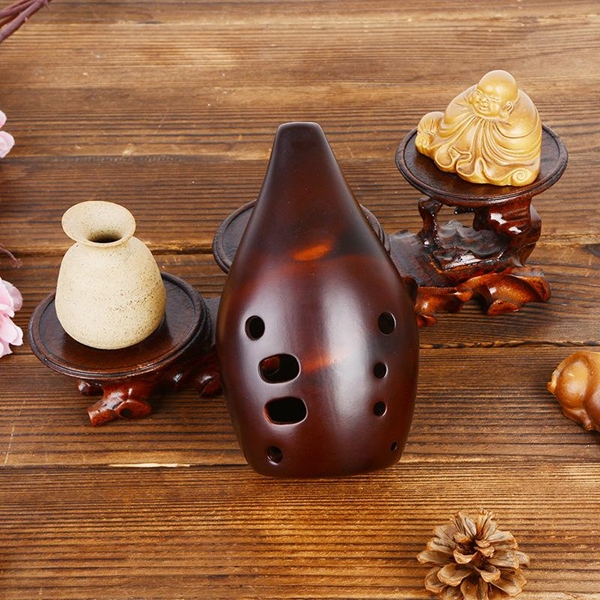Tongue-like playing skills
Tone is a common performance technique of Xun. It is suitable for playing enthusiastic, lively and lively tunes. The sound is required to be strong, clean and elastic, and the rhythm should be even and steady. The pronunciation is divided into single pronunciation (including single external and single internal), double spit, light spit, gas spit, lip spit and so on.

On the basis of maintaining the correct mouth shape, the tongue is naturally upward and slightly attached to the inner edge of the upper lip. When exhaling, it retracts quickly, so that the air rushes into the blow hole to make a short and powerful sound, similar to the sound of "spit".
On the basis of maintaining the correct mouth shape, the base of the tongue is retracted to block the upper palate, and the base of the tongue is rapidly advanced when exhaling, so that the air rushes into the blowing hole and makes a short and powerful sound, similar to "ku". "sound.
Double vomit is a combination of single internal vomit and single external vomit, which is twice as fast as single vomit. Articulation requires a sound that is strong, clean, and elastic, and the rhythm should be even and steady.
There is no essential difference between the light spit and the commonly used pronunciation, except that the range of motion of the tongue is short and small, the strength of the pronunciation is weakened, and the sound is light and soft, similar to the "zone" sound, like the soft bow of a stringed instrument, suitable for expressing lyrical fast music.
Breathing out depends on the sudden contraction of abdominal strength, coupled with the strong support of the diaphragm, so that the airflow rushes into the blowhole in a short and powerful manner to make a sound. Similar to the "hu" sound, the breath is thick and round, but it is not widely used due to the slow pronunciation, and is only used occasionally in special circumstances.
Lip spit relies on the strength of the upper and lower lip muscles. At the moment when the upper and lower lips are consciously opened and closed, they use the impulsive force of the airflow in the abdomen to input the airflow into the blow hole to make a sound. Similar to the "flashing" sound, the lip articulation is soft, and it is only suitable for use in the attack of a weak attack or in special circumstances.
The flower tongue is the tongue beating. The tip of the tongue touches the palate slightly, and when the exhalation hits the tip of the tongue, the tip of the tongue vibrates continuously and rapidly, and makes a "beep, beep" sound. Lagonic sounds are like the fingers of a plucked music, and are only used when needed.
 渝公网安备 50010702504639号
渝公网安备 50010702504639号